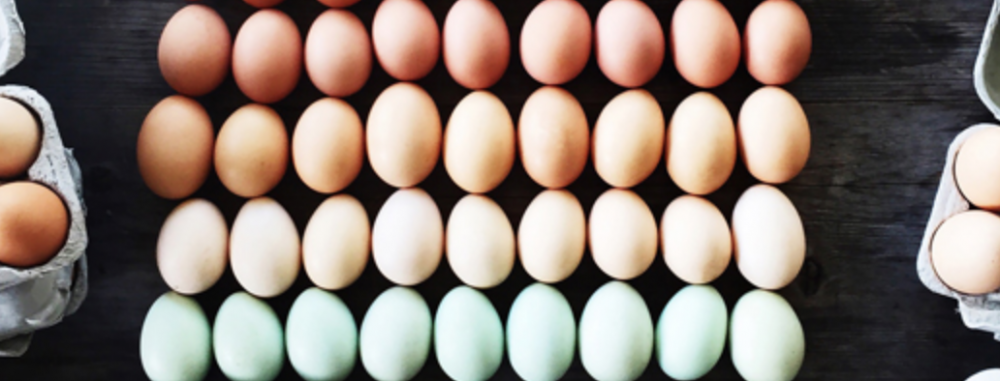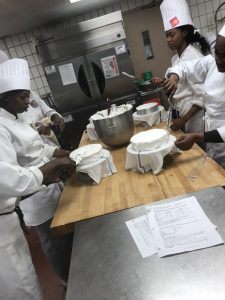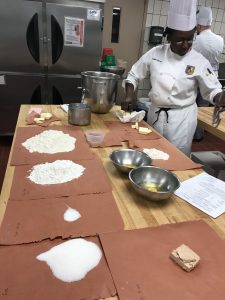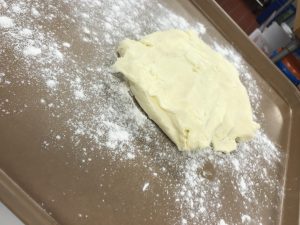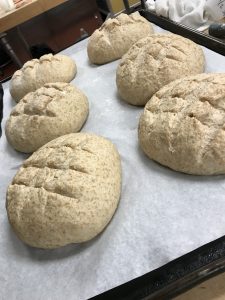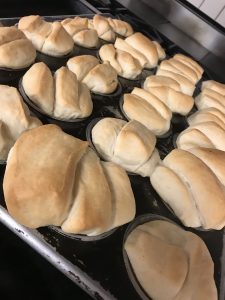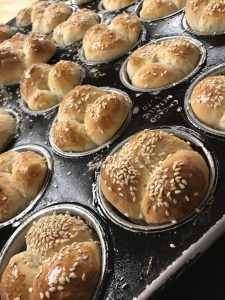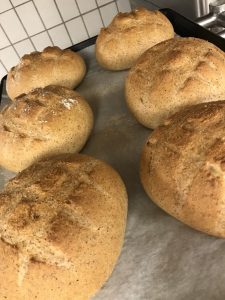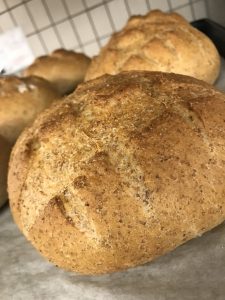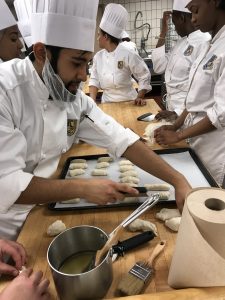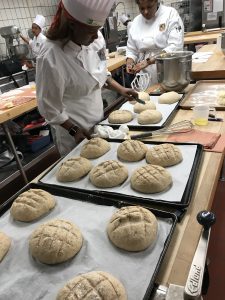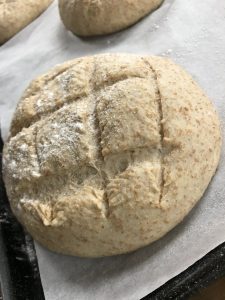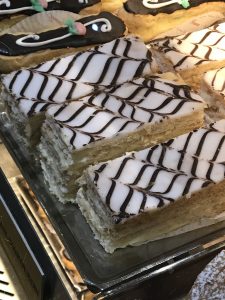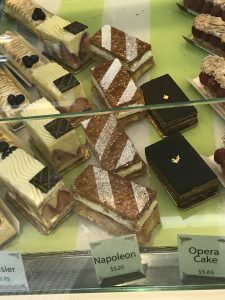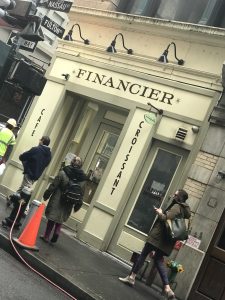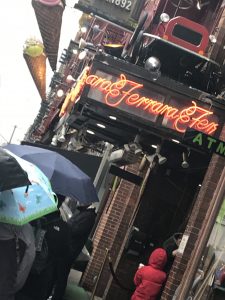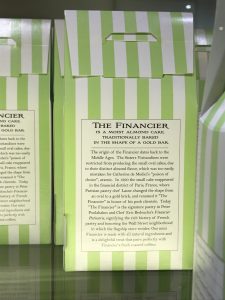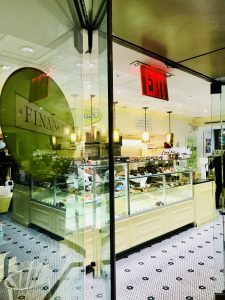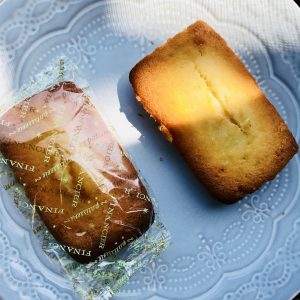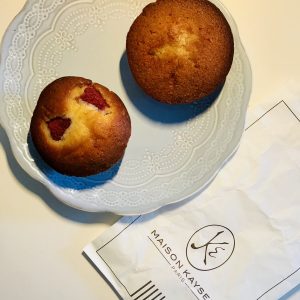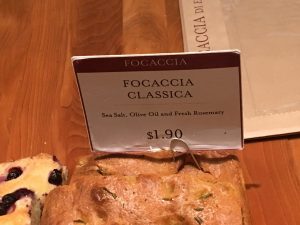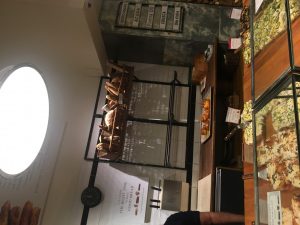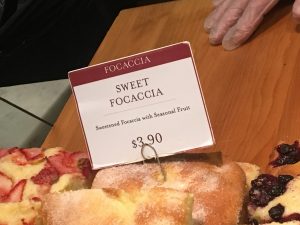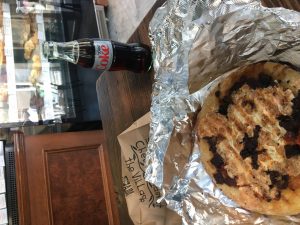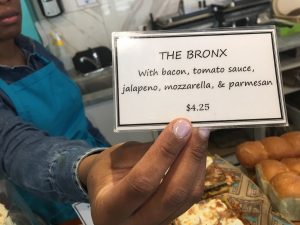“Death of a Loyalist Soldier” by Robert Capa will always be seen as notable war photograph even if it was staged or not. After reading the article written by Richard Whalen I concluded with Whalen that Robert Capa’s photo was not a staged photograph. Robert Whelan made some great points on the validity of the photograph. During a time of war, I don’t think a photographer would have the time to even think about staging someone to take a photograph. I’m certain that bullets were flying everywhere, and soldiers were either securing a safe place for cover or either firing back at the other side. The authenticity of Capa’s photograph matters because what was captured in that photograph is what makes it valuable. Even if this wasn’t captured in a photograph, that was the time there was a war going on and that was how soldiers actually die without them expecting it or knowing when they will be shot. Another great conclusion was that of Captain Frank, who was shown the photograph and asked to give an opinion as if he it was an evidence in a homicide case. Frank after looking at the photograph, concluded that the person in the picture was actually shot. He noted that if you look at the person left hand, you will see that his fingers were curled, giving an indication the muscles have gone limp and he was already dead. He also stated that someone faking wouldn’t know that such a hand position was necessary.
Robert Capa’s Death of a Loyalist Soldier ( RESPONSE )
It was a universal occurrence during the Spanish Civil War for photographs to be staged; because they did not have any freedom of movement and also unable to go to active fronts, , photographers resorted to pictures of soldiers feigning combat. Capa asserted that the photograph was taken at the battle site of Cerro Muriano, but research suggests it was taken in the town of Espejo,30 miles away. I think the photograph was staged because someone being shot would be in more pain and agony and would be in a agonizing posture falling to the ground. His facial expression was not dramatic as he had seen been in danger , This controversial arguments is in comparison to Home Of The Rebel Sharpshooter by Matthew Brady which was also a photo taken in during war periods, which a dead solider rifles sits neatly beside him.In my perspective, those times I would not consider authenticity to matter because photographer did not have the tools and resources we have now to present certain type of photographs to the public and giving credit to them , they made the effort for people to have an understanding of what was happening during war by using these photos whether staged or real.
Baking and Pastry Week 10 / Danish Dough, Whole Wheat Boules, Assorted soft rolls- Club, Butterflake, and Cloverleaf
Today we had the pleasure of learning the steps of making danish dough using the modified straight dough. We also prepared an assortment of breads and rolls. We made Whole Wheat Boules, and Assorted soft rolls- Club, Butterflake, Cloverleaf. The class was also shown how to decorate a cake, which we had the opportunity to practice our decorating skill.
Napoleon
The Napoleon is a pastry made of many layers of puff pastry with filling alternating the layers. It can be eaten as a dessert, or even as a decadent meal. As a French pastry it is called mille-feuille, and it is filled with whipped cream, and pastry cream. The topping may be simply powdered sugar, or a layer of fondant, often with strings of chocolate drawn into a chevron design. I had the pleasure of visiting two prominent bakeries to sample this amazing pastry. The bakeries I choose to sample these were at the Financier and Ferrara, both places were located in lower Manhattan. My first stop was at the Financier Café, located at 60 Stone Street, New York. When I first entered their store, I was immediately bombarded with the strong aroma of coffee which I love. I then noticed the lovely colors of the cakes and pastries in the showcase. I began my search for this Napoleon pastry, which I located quickly. I left Financier and headed to Ferrara Bakery and Café, located at 195 Grand Street, New York. When I got to the area of Ferrara, it wasn’t hard to locate. The place had a large lighted sign with their name in lights, reminded me of Broadway. As I entered, I noticed the place was much more crowded than Financier. Apparently, they are like a small restaurant combined with the bakery. The line to purchased baked good was very long, and they had more products in their showcase than financier. While on line waiting my turn, I noticed they had the Napoleon but in two sizes. A regular size and a half size of the regular ones. I purchased the regular size and two cannoli and left for home.
Financier
Financier Patisserie first opened in the lower Manhattan near the stock market neighborhood. Named after the French Financier cake that originally was created for Financiers since they were very simple and easy to eat. Some Financiers didn’t have time for lunch so this little cake was perfect to for them to enjoy during working hours since they didn’t have any filling or topping that would leave their hands messy and sticky. At Financier Patisserie these cakes are sold individually and wrapped in plastic bags. They taste like almonds and butter, not too sweet and medium moisture! Delicious! They only cost $1.85.
Mayson Kayser also sells Financiers but they have a muffin-like shape, they come in plain, pistachio, raspberry and cherry flavors. They are very sweet, the dough tastes like almond paste and they have a lot of moisture. They are good but I prefer the Financiers at Financier Patisserie. The cost at Kayser is $5.35 which is I think is a little too expensive. One aspect I liked from Kayser is that they have a cozy and beautiful interior and the service is always on point.
My baking experience was both great at Amy’s bread and also at Eataly FlatIron, however some characteristic was very different from the other . At Amys Bread the customer service was awesome but I did not like the appearance and display of the product but the product “The bronx was the product I purchased which I enjoyed very much it was tasteful and flavorable. At Eataly the customer service was great as they helped me with my preference of the bread but the product did not taste good , the topping threw off the flavor of the bread. The price were reasonable but at Eataly the price of the focaccia bread was cheaper, you pay for the quality of the product.
Baking Term Paper Post
This is a slice of opera cake from Balthazar Boulangerie.
This is a slice Mon Gateau Fine Bakery and Cafe.
The first bakery I decided to visit was Balthazar Boulangerie located at 80 Spring St, New York, NY 10012. The bakery had a very French style to it with multiple breads lining the walls on shelves and multiple pastries and cakes on display in glass cases. There were also baskets of baguettes as well as many pastry chefs working in plain sight of the customers. The second bakery I visited was the Mon Gateau Fine Bakery and Cafe located at 8101 5th Ave, Brooklyn, NY 11209. The bakery in comparison to Balthazar, is a more modernized bakery with a section with glass cases lined with pastries and cakes which was followed by a section with a multitude of breads.
Homework #3
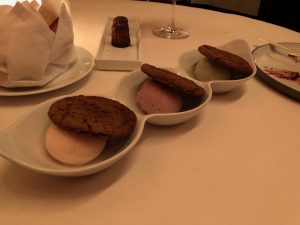
Dessert served sent by the chef -Maritza B Flores Here we can see three sorbets of different colors. This photo shows the plating chosen by the Chef at Cafe Boulud. This reminds me of the traffic lights in the streets. On top of these sorbets you can see brown cookies to end it with some decor. All these sorbets each have their own little place to rest on as they melt. The texture of these soft cookies can engage with these sorbets as they are slowly melting. Note how the cookies are leaning in on the sorbets and are both facing the same direction. This is how they were served.
HW#3: Photographing and Describing Composition: Oyakodon
The image is of an oyakodon which is a Japanese rice bowl dish consisting of egg, chicken, scallions and various other ingredients used as a garnish. In English oyakodon literally means parent child bowl and is supposed to be a representation of life. In this photograph the the egg is placed on top the rice serving as a canvas for the garnishes in a sense. On top of the egg, are the fish cakes which are sliced julienne and then sprinkled around the egg like grass. On top of that is a combination of the sliced scallion and sliced seaweed which represent life as plant life. Finally the slices of pickled radishes represent the sun which represents how the sun provides energy for everything on the Earth.
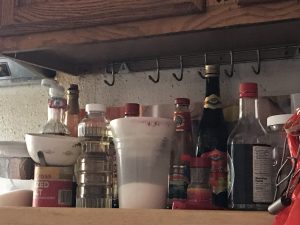
The things on kitchen counter. I’m from an Asian background, so other than the basic things like oil, sugar, salt, and MSG, there are bottles of different types of sauces. Some of the sauces are soy sauce, fish sauce, and oyster sauce. To make things convenient and efficient, these flavoring and seasonings are placed next to the stove.
